Categories
New Blog
Tags
As we known, the bike frame is the heart of the whole bicycle, since it holds the whole bike components together. However, there are different materials bike frames and designs in the market. So, what are the different types of bike frames materials, and how does that influence the bike performance? Here is a simple explaining how frames are manufactured.
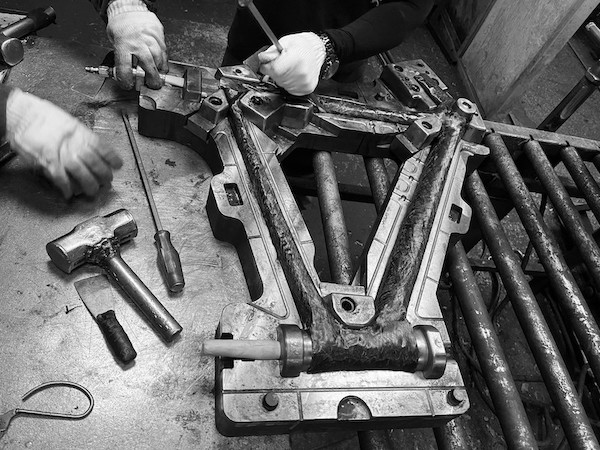
Mountain bikes frames
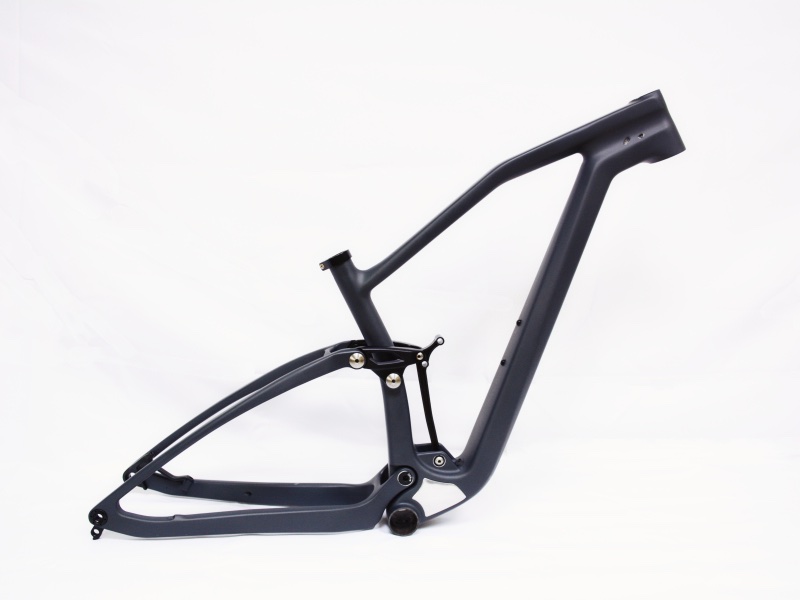
Mountain bikes are among the most common types of bikes in the market. Their frames are typically made out of carbon fiber, titanium, aluminum, or steel. Also, they’re thicker and heavier than most other frames since they’re taken through some of the harshest riding conditions.
If you’ve ever gone mountain biking, you know why a strong frame is necessary. Often you jump over obstacles with the landings requiring a solid frame so the bike doesn’t fall apart. This kind of repeated stress would likely break something like a road bike frame within a few months. As such, mountain bike frames need to be thicker and have more mass to maintain their integrity. Unfortunately, that also means they’re harder to ride up the mountain. However, that is a sacrifice you must make so you don’t injure yourself as you head downhill.
Additionally, mountain bikes have varying designs, so there may be different types of mountain bike frames. For instance, the top tube may be curved. Alternatively, you may see an extra tube attaching the top tube to the down tube for extra rigidity. It’s worth noting that mountain bike frames also typically have short headtubes. It’s also common to see a space on the seat tube or somewhere else on the frame where a shock absorber can be integrated. Ultimately, we’ve found some of the best mountain bikes in the market with different designs to suit people’s needs.
Road bike frames
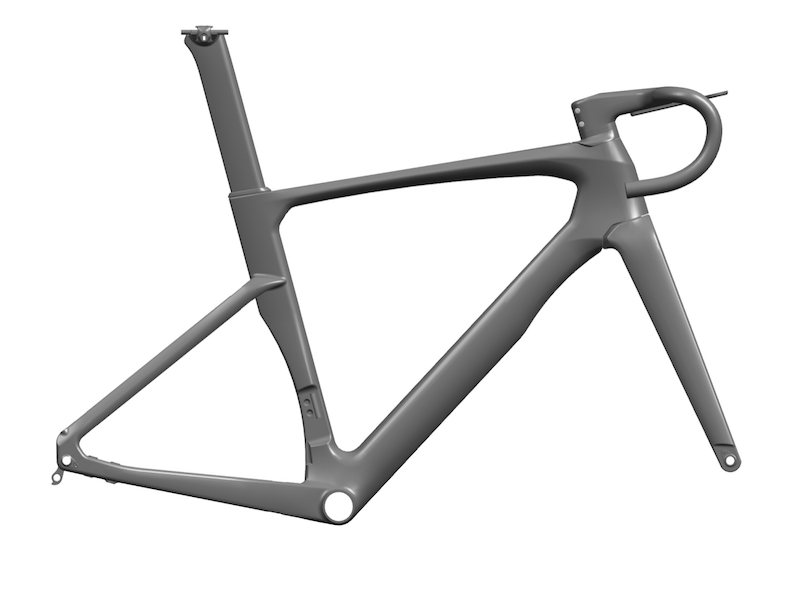
You can typically distinguish a road bike from other bikes by the frame. They’re made of light solid materials and usually have a plain design. Those made of carbon fibre have thin tubes to make them as lightweight as possible. Those with carbon fiber road bike frames can be light weight, stiffness,rigidness,stable performance.
Concerning the head tube, there may be some separation where the top and down tubes attach; hence, they can be longer than those on some mountain bikes. However, some manufacturers also choose to put them closer together. Also, the seat tube may be longer than those on other bikes since the bike is designed for an aerodynamic riding position.
Hybrid bike frames
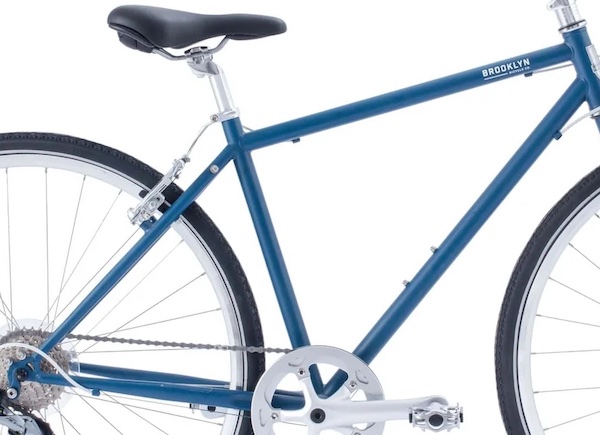
Hybrid bike frames are sort of a mix between road bike frames and mountain bike frames. The frames are lightweight but with the seat tube and front tube positioned for an upright riding position. The Vilano Diverse 3.0 perfectly illustrates what a hybrid bike looks like. Even the handlebar is made for upright handling with a rigid suspension, different from what you’d get in most mountain bikes.
Gravel Bike frames
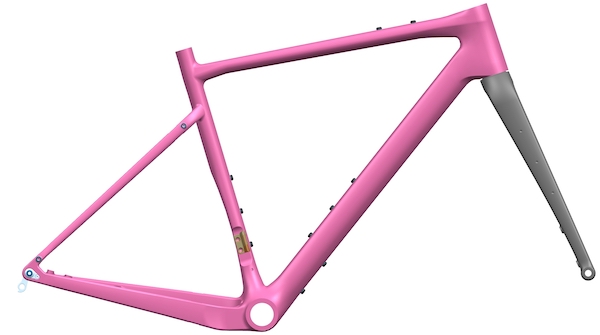
With a gravel bike frame, you get longer head tubes for better comfort, with the frames also strong enough to carry extra equipment and racks. Also, these frames have slacker head angles, meaning the “slack” angle is 63-66 degrees. This allows the front fork to stick out further, making the bikes more stable at faster speeds. That said, they don’t turn as quickly, leading to slower handling.
Cruiser bike frames
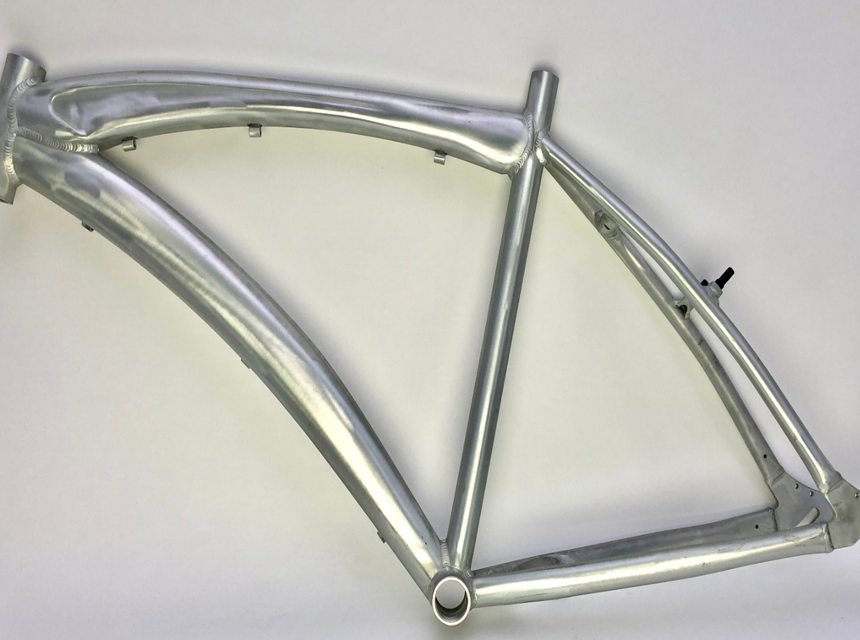
Cruiser bikes, like their hybrid counterparts, are designed for upright riding. They may also have wider frames compared to their gravel and road counterparts. Also, the fact that they typically use wider tires than most other bikes means the separation between the chain and seat stays may be wider than in other bikes.
Commuter bike frames
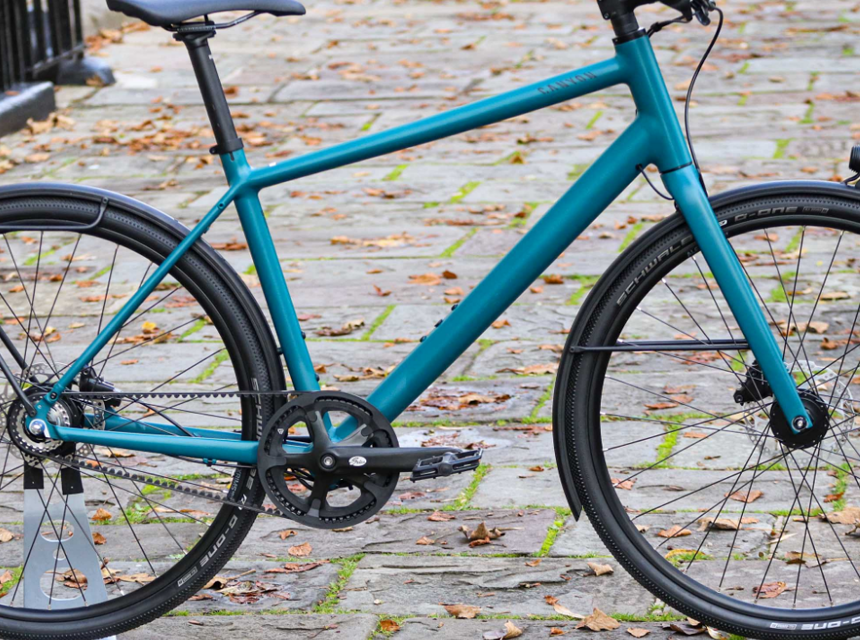
Commuter bike frames often look a lot like road bike frames. They’re thin and lightweight, and in some cases, they may even look identical from afar. That said, these bikes typically use wider tires. As such, the seat and chain stays will likely be slightly wider than those on a road bike.
Cargo bike frames
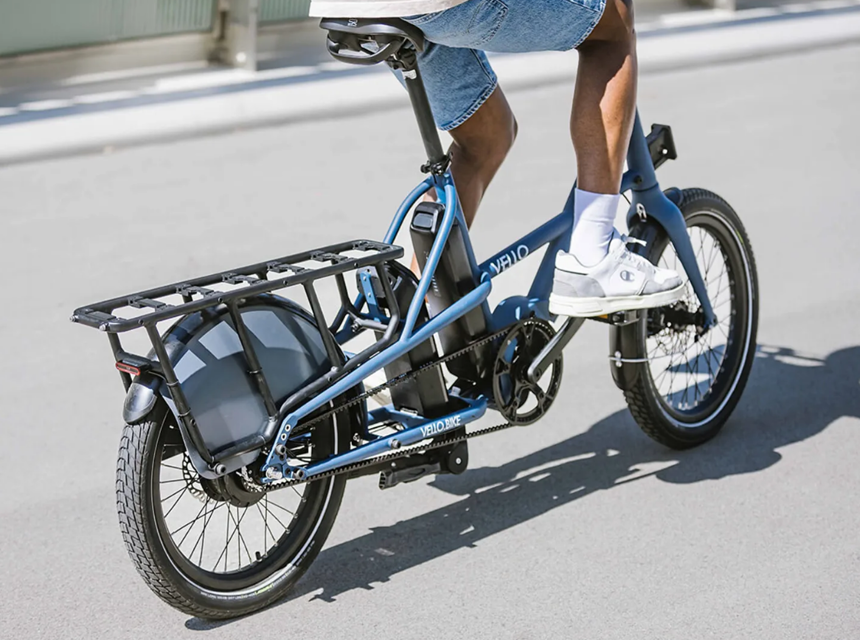
Cargo bike frames are unlike any other bike frame on the market. The rear triangle is the same as you’d find in any other bike. However, often there’s a very long tube that extends from the seat tube through an elongated head tube with the front wheel placed much further forward than in other bikes. The space between the head tube and the front wheel is a cargo area. Some variants also use a smaller back wheel with a cargo area above it. In this case, the rear triangle of the bike is the one that’s extended.
Choosing Material for the Frame
As mentioned above, the manufacturing process for the bike depends on the type of materials used including carbon fiber, steel, aluminum, and titanium.
Carbon fiber bike frames
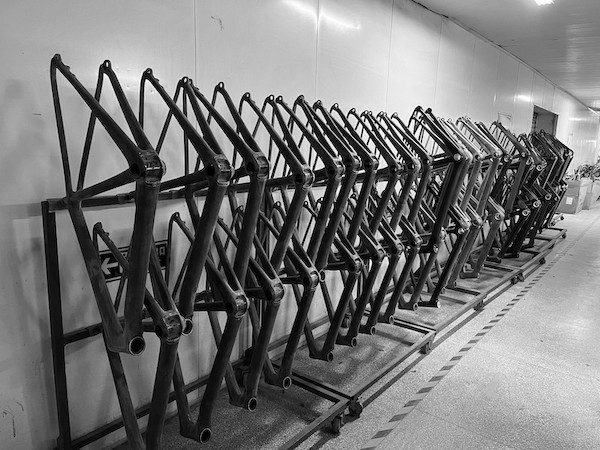
Most high-end bikes in the market, whether mountain bikes, road bikes, or otherwise, are made from carbon fiber. As such, if you see one in a bike shop that costs $2,000-$4,000, it’s likely made of carbon fiber.
These frames are made when carbon sheets are bonded together with resin. They’re pretty low-density, which makes them incredibly light, and one of the extra perks is they absorb vibrations better than most other frame materials. This is why carbon-fiber road bikes are fairly comfortable despite not having shock absorbers. They also allow for a range of shapes which is why road bikes made using carbon fiber have aerodynamic frames. However, carbon fiber is one of the most expensive types of bike frame materials hence the high cost of carbon fiber bikes.
As for downsides, these bikes are hard to repair, and even light damage can mean structural issues that force you to get a new bike.
Aluminum
While aluminum is light, it’s not as lightweight as carbon fiber but is more affordable. Additionally, it’s firm but not as strong as steel. As such, it makes a great midpoint between steel and carbon fiber. One other perk is its stiffness, although it’s a double-edged sword since the stiffness also means it’s unable to absorb road vibrations. As such, it makes robust and light bike frames. However, aluminum bikes may not be as comfortable for long rides.
If you see a road bike that costs between $1,000 and $2,000, it’s likely made of high-end aluminum. Nevertheless, we’ve outlined some of the best road bikes under $2,000, and you’re likely to find a few carbon fiber models among them as well.
Steel
Steel bikes are becoming less and less popular by the day due to the material being heavy. You can still get a custom steel bike, although you’re unlikely to find them in most bike shops. However, the fact that they’re custom means they cost significantly more than they used to. Depending on the design, they might even be more expensive than a high-end store-bought bike.
Nevertheless, steel bike frames are pretty solid and easy to work with, so they can also be repaired quickly and easily.
Titanium
Titanium is stronger than steel but also lighter. Also, compared to aluminum, it’s heavier, but you don’t need as much of it. As such, titanium frames might actually be lighter since they use less material. Other perks include being corrosion-resistant and being as comfortable as carbon fiber. After all, titanium frames absorb vibrations reasonably well. Unfortunately, the metal is rare and hard to work with, which increases the overall cost.
Frame Size Chart
It’s also worth noting that bike frames come in different sizes, and here’s what you should go for depending on your height, inside leg measurements, and the type of bike you’re buying.
Frame sizes for road bikes
|
RIDER’S HEIGHT |
INSIDE LEG MEASUREMENTS |
IDEAL FRAME SIZE |
| 5'1"-5'3" | 27"-29" | 48 cm |
|
5'3"-5'5" |
28"-30" | 50 cm |
|
5'5"-5'7" |
29"-31" |
52 cm |
|
5'7"-5'9" |
30"-32" |
54 cm |
|
5'9"-5'11" |
31"-33" |
56 cm |
|
5'11"-6'1" |
32"-34" |
58 cm |
|
6'1"-6'3" |
33"-35" |
60 cm |
|
6'3"-6'5" |
34"-36" |
62 cm |
Frame sizes for mountain bikes
|
RIDER’S HEIGHT |
INSIDE LEG MEASUREMENTS |
IDEAL FRAME SIZE |
|
4'11"-5'3" |
25"-27" |
13"-15" |
|
5'3"-5'7" |
27"-29" |
15"-17" |
|
5'7"-5'11" |
29"-31" |
17"-19" |
|
5'11"-6'2" |
31"-33" |
19"-21" |
|
6'2"-6'4" |
33"-35" |
21"-23" |
|
6'4" and over |
35" and over |
23"-25" |
Frame sizes for roadster and hybrid bikes
|
RIDER’S HEIGHT |
INSIDE LEG MEASUREMENTS |
IDEAL FRAME SIZE |
| 4'10"-5' | 26"-28" | 13"-14" |
|
5'-5'2" |
27"-29" | 15" |
|
5'2"-5'4" |
27"-29" |
16" |
|
5'4"-5'6" |
28"-30" |
17" |
|
5'6"-5'8" |
28"-30" |
18" |
|
5'8"-5'10" |
29"-31" |
19" |
|
5'10"-6' |
30"-32" |
21" |
|
6' and over |
32"-34" |
22" |
While height is a pretty good indicator of what bike frame size you should go for, the inside leg measurement is typically more accurate. You measure from the groin area down to the ground while your legs are shoulder-width apart. You might need a friend or partner to help you get accurate results.
Overall, there are different bike frames, each with benefits and downsides. Steel is sturdy and easy to work with but is becoming increasingly uncommon in the market. It’s also heavy. Titanium is relatively expensive and hard to work with but is durable and light. Aluminum frames is more fatigues more quickly than other materials, but cheaper.
Lastly, carbon fiber frames is lightweight and a more comfortable when riding. It is used in different types of bike frames, whether it’s mountain biking, road racing, etc.
Xiamen Tour de Cycling Industry&Trade Co.,Ltd. service all kinds of carbon fiber frameset OEM in different road frames,MTB frames and gravel frames etc.we have 16 years experience and rich matura technology to supply you super light weight, stable, high performance carbon frames for your bike. please freely to contact us for anything frames requirement .